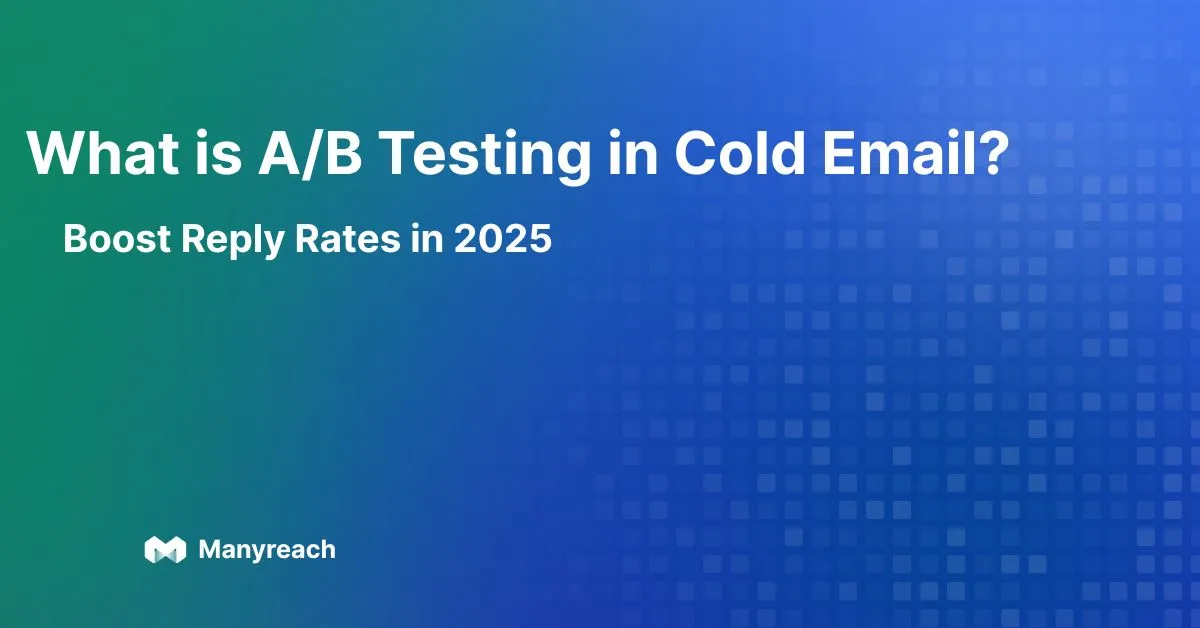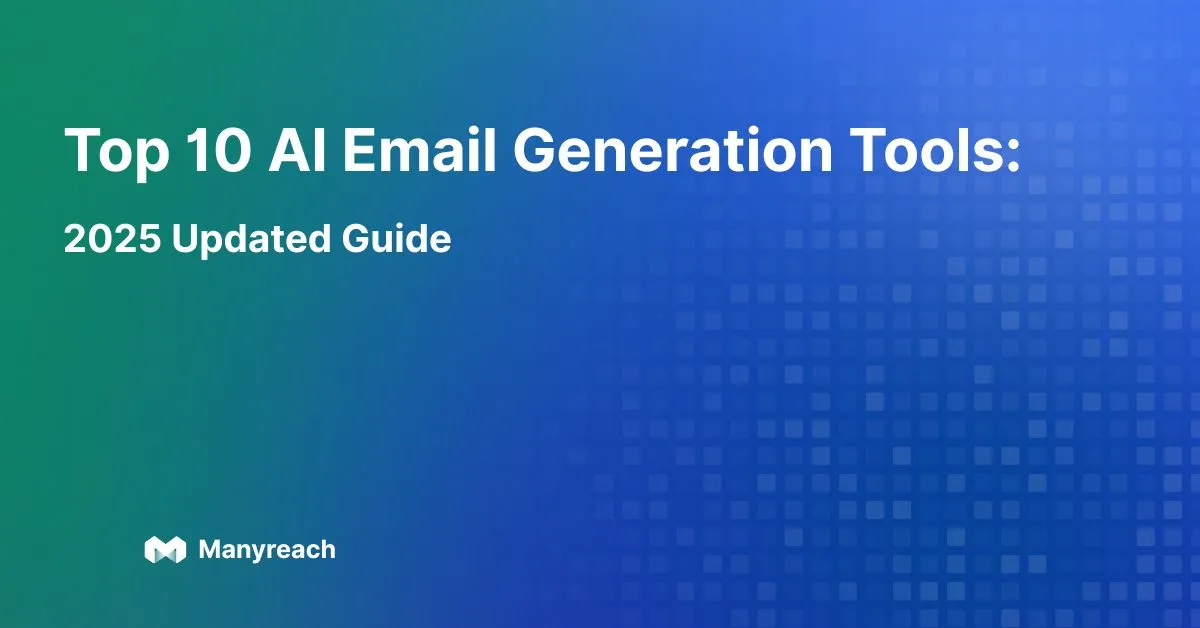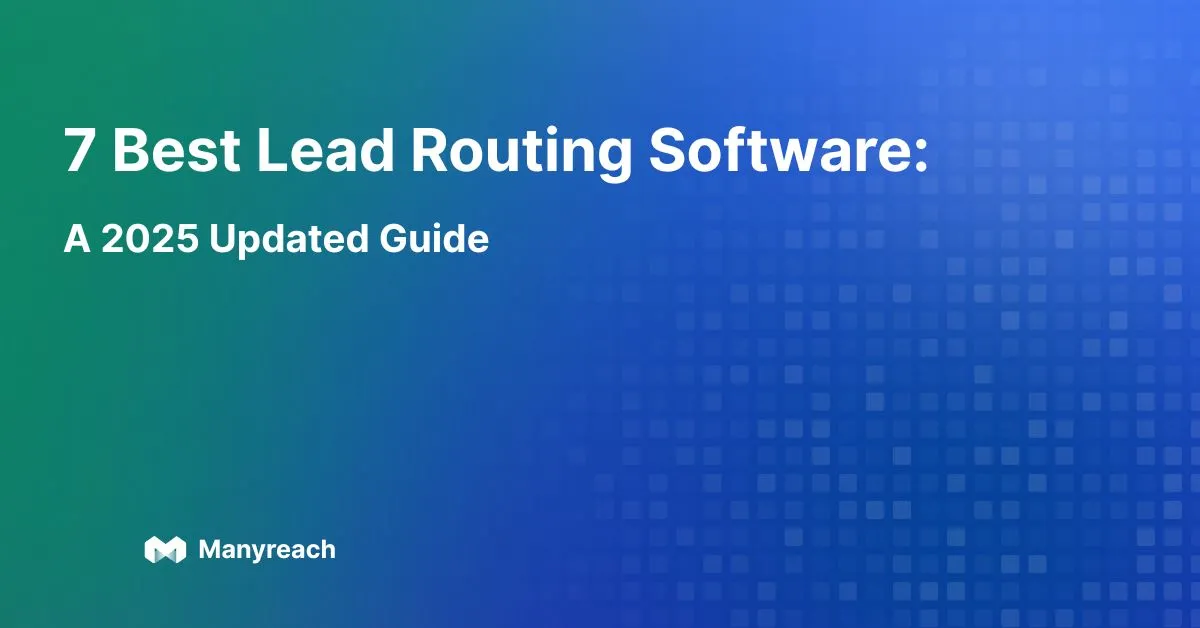CC & BCC in Gmail: Cold Email Essentials

CC in gmail means “Carbon Copy”, and it helps you to send a copy of your email to those who’re not the primary recipient of your email. BCC on the other hand is the “Blind Carbon Copy”, where the BCC’d person receives the email, without letting the primary recipient know.
In this blog, I will help you to understand the meaning of CC and BCC in emails, and especially in cold emails.
Let’s dive in!
What is CC in Gmail?
The meaning of CC simply is Carbon Copy. So, CC in Gmail is basically the digital equivalent of the copy of the email you’re sending to someone who isn’t the main recipient, but still matters.
The CC’d person can see the email, chime in if needed, or simply be “in the loop.”
Example:
You're emailing a potential client, and you’re CCing your manager to stay in loop. It will help your manager to provide you with more information, when your prospects ask for those.
Where To Find the BCC & CC in Gmail?
Finding the CC field in Gmail is simple. The BCC and CC are at the right hand side of the “To” field in the “Compose”.
Here is a step-by-step on how you can find BCC and CC in your Gmail “Compose” page.
On Desktop
- Open Gmail and hit "Compose."
- You’ll see “To.” Right next to it is CC and BCC in faint grey.

- Click CC and a new line appears!
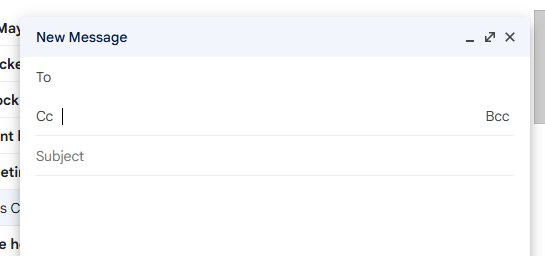
- Add the relevant email addresses.
- Now you can write your email body, review it, and hit Send.
On Mobile
- Tap the pencil icon (bottom right) to start composing.

- Tap the down arrow beside the “To” field.
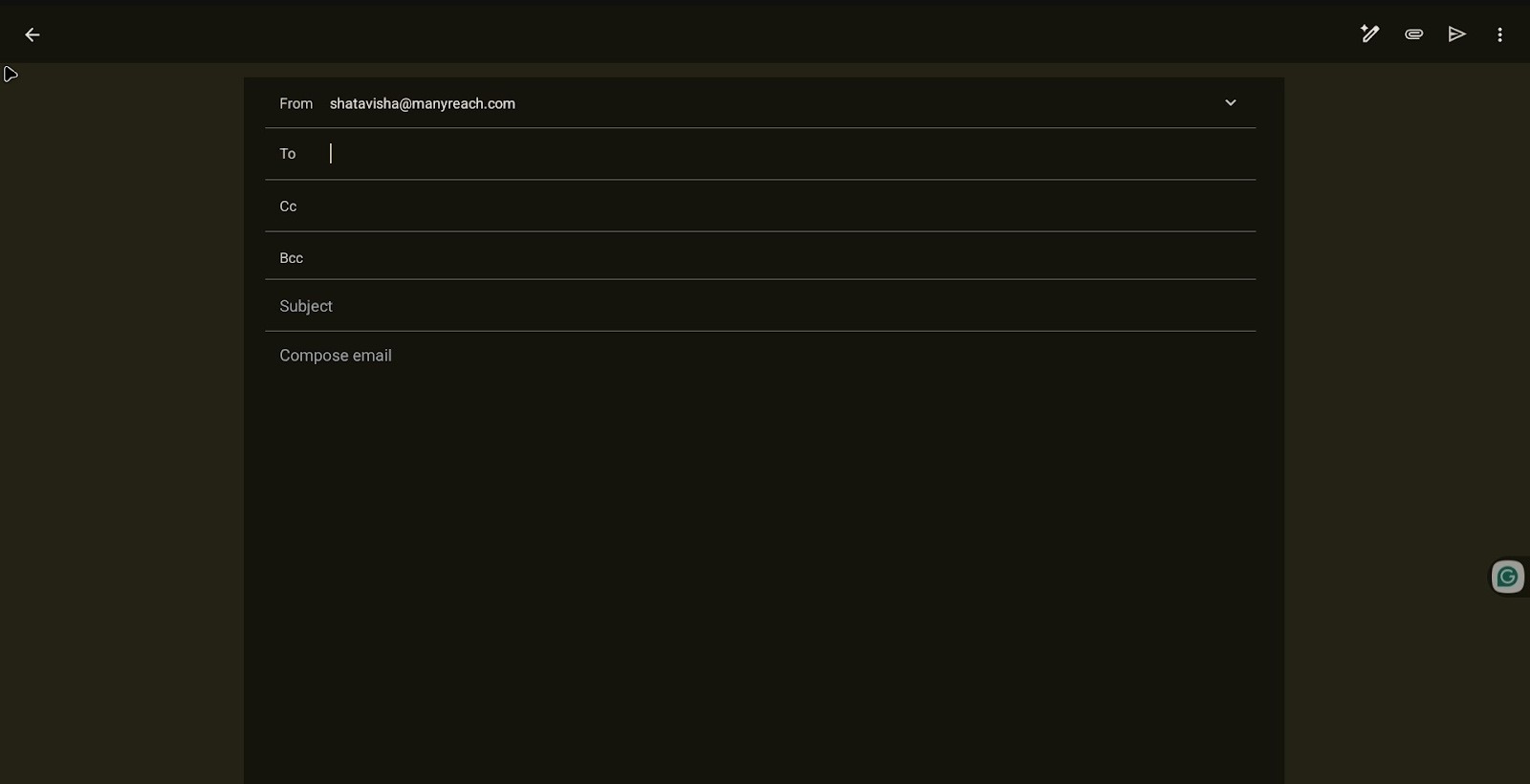
- CC and BCC options will unfold like a hidden drawer.
- Add your addresses and proceed to write your email.
When Should You CC Someone And When You Shouldn’t
The reason why senders use CC is to add multiple addresses to an email. But, you can also do it in the “To” field. Then why do you need to CC someone?
The reason you CC someone is when you want the CC’d person to receive your email, but not reply to it. In short, it gives a positive impression to the email recipient about your email etiquette.

When Should You Use CC
Here are some of the important reasons why you CC someone in your email.
When You Want to Introduce Someone
When you want to introduce someone to an existing team, you can CC them. All you have to do is compose the email in that manner and add the recipients accordingly.
When You Want to Keep People in Loop
You can CC people when you want everyone to stay in loop, whether it’s your manager, team leader, prospects or clients. This way, you can keep everyone informed, without urging them to reply.
When You Want to Release Newsletters
You can CC multiple people in your email when you’re sending them newsletters. But please note, in such a case, you can’t CC the target audiences of the newsletters. You can CC recipients from your organization whom you want to convey the message that the newsletter has been sent.
When You’re Onboarding a New Project
During the onboarding process of a new project or client, when you want to introduce your entire project handlers by CCing them in the email. This way, your clients would know whom to communicate with and for what reason.
All you have to do is compose the email in a manner where you can mention each member’s role for the project.
Don’t use CC when
Here are some instances where you should never CC someone:
When People Don’t Know Each Other
Avoid CCing random people in your email who don’t know each other. For example, don’t include other teams or their members to an email that revolves around your project. It will not make any sense to the recipients, and you’ll also be likely breaching privacy guidelines.
When You’re Sending Exclusive Email
This one is a no-brainer. Why would you send exclusive emails to people other than the recipient. And this includes cold email too.
For example, if you’re trying to send a cold email to prospects, to build an exclusive relationship, there’s no need of CCing others.
It will hurt your chances of creating a meaningful relationship with your prospect. So, it’s best to avoid it.
When You Don’t Want Others to know
If someone has CCs others, but you don’t want to alert them about your reply, you can opt out of this option. This way, your reply remains private, and you can also urge your recipient to reply privately, so that the conversation remains private.
What is BCC in Gmail & When Should You Use It
BCC means Blind Carbon Copy. When you use this feature in Gmail, the BCC’d person receives the email, but their email address is hidden from everyone else.
Here are some scenarios where you can use and not use the BCC feature
Use BCC to
Here are some instances where you can use BCC:
When You Don’t Want the Primary Recipient to Know
You typically BCC recipients when you don’t want the primary recipient to know about it. Cold emails are the best examples of it. For example, if you want people on your team to know about your outreach, but don’t want your prospects to know, you use this feature.
When You’re Mass-Sending Emails
When you’re sending the same email to people, who don’t know each other, you can use this field. For example, if you want your manager to know about your conversation with your client, you can BCC to inform them about the conversation.
Don’t use BCC to
Here are some instances when you shouldn’t BCC recipients:
When the BCC’d Need Context
When people in BCC don’t have the full background or follow-up visibility, they might miss important updates. In such cases, it’s better to avoid BCCing them, and instead you can privately email them about the updates. It will keep everyone on the same page, without disrupting the conversation.
When BCC Violates Privacy
You should never BCC someone if there’s a chance of violating the recipient’s privacy. For example, if you’re sending details that you or your prospect wouldn’t want anyone else to know, it’s best to keep the conversation private.
When You're Emailing Within Your Organization
In most workplaces, contexts and internal transparency is valued. So using the BCC feature within your own company can show a lack of openness or an attempt to conceal communication. In such cases, you should avoid the BCC feature, and just stick to CCing people, if you want everyone on the same page.
What is the Purpose of CC and BCC in Cold Emailing
When you're sending cold emails, you're probably reaching out to leads, following up with prospects and trying to warm up your funnel. So, CCing or BCCing act as social proof, help in multi-person outreach, and keep conversations transparent, without exploding inboxes.
So, how does CC help?
Social Proof
Once you include a trusted or recognizable person in the CC line, it acts as a social proof. When recipients see that a mutual connection is copied, they will take your email seriously and respond promptly.
So it increases your email’s credibility, signaling accountability and professionalism without needing to state it outright.
Multi-person Outreach
CC helps you in multi-person outreach. For example, if you need to contact both the marketing manager and head, you can use CC to include them in a single email instead of sending separate emails.
This will keep communication consistent, and make sure everyone receives the same information, and saves time while maintaining transparency.
Internal Transparency
CC is best for internal transparency. So, when your manager wants to stay informed about ongoing conversations, adding them to the CC line will ensure they have visibility.
It will also help you to maintain alignment across teams and prevent miscommunication, without requiring them to be directly involved in every reply.
How does BCC help?
Mass Outreach
When you’re sending a single cold email to many recipients using BCC no one can see the other recipients’ addresses.
So it will protect privacy, prevent unwanted “Reply All” chains. At the same time it will also keep your outreach professional and compliant with data protection standards.
Clean Follow-ups
If you want to automatically log emails in your CRM system or keep your assistant informed, using BCC is ideal. It will help you to track communications or share copies discreetly without crowding the visible recipient list, keeping your emails clean and focused.
No Inbox Explosion
When you use BCC in cold email campaigns, it helps you to avoid a flood of unwanted “unsubscribe” or “remove me” replies from strangers.
Since recipients can’t see each other’s addresses, it prevents accidental group responses and protects everyone’s inbox from unnecessary clutter.
Common Mistakes Cold Emailers Make with CC/BCC
Even the savviest cold emailers can fumble when it comes to using CC and BCC correctly. A tiny oversight like CCing too many people or BCCing your boss without warning can turn a clean outreach into an inbox disaster.
So avoid them, learn about these common mistakes, and steer clear of them.
Using CC Instead of BCC
Check thoroughly before sending an email. Some senders often CC people instead of BCCing mistakenly, and that creates chains of miscommunication, and awkwardness.
And in the worst case scenario, multiple recipients send your emails to spam, and your account can get flagged.
BCCing Your Boss Without Telling Them
If you BCC your manager for a cold pitch and the client forwards your email back to them, it can create miscommunication. So, let your manager know that you’re preparing an outreach, and that you’ll be BCCing them.
That will keep the chain of conversation clear, and your outreach will continue without hindrances.
Reply-All Disasters
More CCs means more risk someone will hit “Reply All.” So, it’s best to CC only those who actually matter for the outreach, e.g., your manager, project planner, and prospects. That way the chain is neat, and there’s no room for confusion.
Best Practices of CC/BCC in Cold Emailing
To use CC and BCC in cold email marketing, you have to be smart. So, here are some smart moves while CCing and BCCing people in your emails
Use CC for Strategic Visibility
Loop in influential team members or decision-makers to subtly encourage action. Their presence will signal importance, and add weight to your email. At the same time they can motivate recipients to respond or make progress more quickly.
Use BCC for Campaigns
Protect your leads’ privacy and avoid adding unnecessary recipients to the campaign. It will help to keep the communication chain clean, and also save your emails from spambox.
Segment your Outreach
Don’t mass blast everyone with the same emails. Instead use tools like Manyreach to let you personalize your emails according to your recipients’ pain points and industries.
Pro Tip: Use Manyreach to Supercharge Your Cold Emails
Manually managing CCs, BCCs, personalization, follow-ups, and open rates is like playing email Jenga. That’s where Manyreach can help your cold email outreach.
- Automate personalized emails (yes, even at scale)
- Track opens, clicks, and replies without being creepy
- Set smart follow-ups that don’t scream automated bot
- Keep your domain reputation clean
And yes, you can intelligently use CC and BCC fields within the platform to maintain that human touch while scaling your outreach. Manyreach takes the chaos out of cold emailing and replaces it with clean, high-converting efficiency.
.
Tips to Keep Your Cold Emails Out of Spam (While Using CC/BCC)
- Limit the number of recipients. Gmail doesn't allow to CC or BCC a chain of people in one email, especially if they’re all cold leads.
- Personalize your emails. Tools like Manyreach help you automate this.
- Avoid spammy phrases. No “Act Now!” or “Limited Time Offer!”
- Use a clean signature with real contact info.
FAQs
Q1: Can I CC and BCC people in the same email?
Absolutely. Gmail lets you mix and match. Just be strategic. Example: You can “To” the lead, “CC” your manager, and “BCC” your CRM tool. Keep it clean, though—too many fields can feel crowded and spammy.
Q2: Will the recipient know I’ve BCC’d someone?
Nope! That’s the whole point. The BCC field is private. However, don’t use it for sneaky stuff—you never know who might forward what.
Q3: Can I BCC myself on emails to keep records?
You can and should! It’s a handy way to store conversations in your inbox. Or, use tools like Manyreach to automate logging into a CRM.
Q4: What happens if someone replies to an email with BCCs?
Only the visible “To” and “CC” folks get the reply. BCC’d recipients are invisible and won’t get any follow-ups unless you manually include them later.
Q5: Is it rude to CC someone without asking?
It depends, if the conversation is professional and the person has context, it’s fine. But if it’s sensitive or unexpected, shoot them a heads-up message first.
Final Thoughts
Whether you’re a cold email marketer or just trying to keep your emails neat and professional, understanding CC and BCC is a game-changer. These aren't just tiny fields sections in Gmail, they're strategic tools that can shape perception, build trust, and keep your outreach efficient.
Use them wisely, and respect your recipients. And automate the heavy lifting with tools like Manyreach, so you can focus on closing deals, not clicking through drafts.

.webp)




